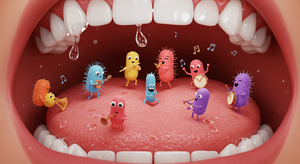There is a lot of rumbling out there in the nutrition w orld right now as the new political administration has provided a platform for challenging a lot of old-school stories and propaganda about what constitutes healthy nutrition. One of the big shifts concerns a debate that has been going on for many years in the nutrition world about which is better for health – seed oils or animal fats. The real problem, and reason for so much arguing, is the fact that there are lots of studies that support each side of the argument. There is also a lot of basic biochemistry that can’t be ignored that has to be dealt with. I have been listening to and reading about the opposing perspectives for the last 20 years, so I thought I might share a bit of what I have learned. orld right now as the new political administration has provided a platform for challenging a lot of old-school stories and propaganda about what constitutes healthy nutrition. One of the big shifts concerns a debate that has been going on for many years in the nutrition world about which is better for health – seed oils or animal fats. The real problem, and reason for so much arguing, is the fact that there are lots of studies that support each side of the argument. There is also a lot of basic biochemistry that can’t be ignored that has to be dealt with. I have been listening to and reading about the opposing perspectives for the last 20 years, so I thought I might share a bit of what I have learned.
If you want to skip to the ultimate conclusion, the an swer is that neither side is either right or wrong. The devil is in the details. And it is precisely these details that you need to understand so that you can make good choices for yourself. Because the best choice for you will depend upon your circumstances right now, and will be different from somebody else’s. It is kind of like being in a clothing store and having the store clerk pull a red shirt and a blue shirt off the rack and asking which one is right for you. You kind of need to know what the sizes are of each shirt, what they are made from, and what the price is on each shirt. Red versus blue is not sufficient to make a choice that will work for you. Nutrition is very much like that. swer is that neither side is either right or wrong. The devil is in the details. And it is precisely these details that you need to understand so that you can make good choices for yourself. Because the best choice for you will depend upon your circumstances right now, and will be different from somebody else’s. It is kind of like being in a clothing store and having the store clerk pull a red shirt and a blue shirt off the rack and asking which one is right for you. You kind of need to know what the sizes are of each shirt, what they are made from, and what the price is on each shirt. Red versus blue is not sufficient to make a choice that will work for you. Nutrition is very much like that.
Let’s start with basics. What are these seed oils we a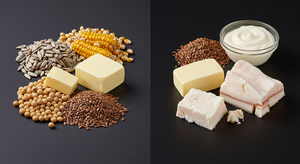 re talking about, and what are the animal fats we are talking about? Seed oils refer to corn, soybean, sunflower, safflower, cottonseed, canola, sesame, grapeseed, peanut, flaxseed, hemp seed, and rice bran oil. Animal fats refer to butter and cream, lard (pig fat), tallow (beef fat), ghee, suet, schmaltz (chicken fat), duck fat, sheep fat, cod liver oil, blubber, and a bunch of animal fats we don’t use in this country. Just to round the picture out, we also have fruit fats such as coconut, olive, and avocado as well as nut oils such as macadamia, almond, and walnut. There are also various solid plant fats such as coco butter, but they are not considered seed oils. re talking about, and what are the animal fats we are talking about? Seed oils refer to corn, soybean, sunflower, safflower, cottonseed, canola, sesame, grapeseed, peanut, flaxseed, hemp seed, and rice bran oil. Animal fats refer to butter and cream, lard (pig fat), tallow (beef fat), ghee, suet, schmaltz (chicken fat), duck fat, sheep fat, cod liver oil, blubber, and a bunch of animal fats we don’t use in this country. Just to round the picture out, we also have fruit fats such as coconut, olive, and avocado as well as nut oils such as macadamia, almond, and walnut. There are also various solid plant fats such as coco butter, but they are not considered seed oils.
So what is the big difference between seed oils and animal fats? It is all about their chemical structure. Animal fats are  shaped like straight lines and are very stable, meaning there is no place for them to be attacked by oxygen (called saturated), while seed oils are bent in 2 or 3 places (called polyunsaturated). At those bend spots, they are vulnerable to being attacked by oxygen. When this happens, this makes the oil turn rancid (oxidized), which is bad for living tissues. Oils that only have one bend in them are more stable (less chance of being oxidized) and are called mono-saturated. So on a chemical level, solid fats are way safer for the body. But this is not the whole story. The body actually needs some of these bendy, flexible oils/fats to form cell membranes. They are essential fats and are useful as long as they have not been attacked by oxygen. Men need about 17 grams per day (4 teaspoons or 154 calories), and women need about 12 grams per day (3 teaspoons or 104 calories). So as you can see, the required amount is not very much per day, considering the average person is consuming 36% of their diet (around 900 calories) as fat according to UC Davis. shaped like straight lines and are very stable, meaning there is no place for them to be attacked by oxygen (called saturated), while seed oils are bent in 2 or 3 places (called polyunsaturated). At those bend spots, they are vulnerable to being attacked by oxygen. When this happens, this makes the oil turn rancid (oxidized), which is bad for living tissues. Oils that only have one bend in them are more stable (less chance of being oxidized) and are called mono-saturated. So on a chemical level, solid fats are way safer for the body. But this is not the whole story. The body actually needs some of these bendy, flexible oils/fats to form cell membranes. They are essential fats and are useful as long as they have not been attacked by oxygen. Men need about 17 grams per day (4 teaspoons or 154 calories), and women need about 12 grams per day (3 teaspoons or 104 calories). So as you can see, the required amount is not very much per day, considering the average person is consuming 36% of their diet (around 900 calories) as fat according to UC Davis.
Another consideration is that there are two main gro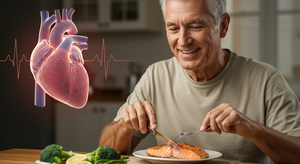 ups of polyunsaturated fats: the omega-6 fats and the omega-3 fats. In terms of requirements for preventing deficiency diseases, the need for omega-3 fats is about 10% of the need for omega-6 fats. However, in clinical settings, it is found that a much healthier range is a ratio of 1:4 omega-3 to omega-6. Some health researchers have postulated that a 1:1 ratio would be even better for combating inflammation. In nature, you never find only one type of fat in a food. It is always a combination of all sorts of fats. This becomes a real challenge when you try to study the effects of one fat versus another in human studies. For instance, there are many studies that show polyunsaturated fats reduce heart disease. Yet when you are able to separate out the impact of just the omega-6 fat versus the omega-3 fat, the believed value of polyunsaturated fats for heart disease reverses when there are only omega-6 fats being used without the omega-3 fats. The actual benefit appears to come from the anti-inflammatory effects of the omega-3 fats. ups of polyunsaturated fats: the omega-6 fats and the omega-3 fats. In terms of requirements for preventing deficiency diseases, the need for omega-3 fats is about 10% of the need for omega-6 fats. However, in clinical settings, it is found that a much healthier range is a ratio of 1:4 omega-3 to omega-6. Some health researchers have postulated that a 1:1 ratio would be even better for combating inflammation. In nature, you never find only one type of fat in a food. It is always a combination of all sorts of fats. This becomes a real challenge when you try to study the effects of one fat versus another in human studies. For instance, there are many studies that show polyunsaturated fats reduce heart disease. Yet when you are able to separate out the impact of just the omega-6 fat versus the omega-3 fat, the believed value of polyunsaturated fats for heart disease reverses when there are only omega-6 fats being used without the omega-3 fats. The actual benefit appears to come from the anti-inflammatory effects of the omega-3 fats.
Let’s use simple butter as an example food. We are ta ught that butter is a saturated fat. Well, in reality, butter has 15 different kinds of fatty acids in it. It has eight different saturated fats in it, making up about two-thirds of the fat. It is very important to understand that each one of those 8 different saturated fats functions differently in the human body. Almost 30% of butter is monounsaturated fats (like olive oil), and a small, less than 5 % of butter is polyunsaturated fats. The actual percentages will vary depending upon the time of year and the diet of the cows. What we think of as a simple food is not simple at all. ught that butter is a saturated fat. Well, in reality, butter has 15 different kinds of fatty acids in it. It has eight different saturated fats in it, making up about two-thirds of the fat. It is very important to understand that each one of those 8 different saturated fats functions differently in the human body. Almost 30% of butter is monounsaturated fats (like olive oil), and a small, less than 5 % of butter is polyunsaturated fats. The actual percentages will vary depending upon the time of year and the diet of the cows. What we think of as a simple food is not simple at all.
Let’s try another common food we are told is full of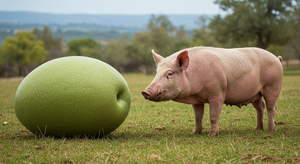 saturated fat – pork. This one is funny because pork fat is actually more like olive oil than animal fat. It is 40-50% mono-saturated fat, 35-40% saturated fat, and 10-20% polyunsaturated oil. Let’s compare this to actual olives – 68-83% mono-saturated fat, 8-25% saturated fat, and 4-21% polyunsaturated oil. The basic message here is that when we eat real food, we are getting a mixture of all sorts of fats, not isolated fats. So the idea of cutting out saturated fats or polyunsaturated fats is fairly ridiculous. All whole foods contain some amount of fat. saturated fat – pork. This one is funny because pork fat is actually more like olive oil than animal fat. It is 40-50% mono-saturated fat, 35-40% saturated fat, and 10-20% polyunsaturated oil. Let’s compare this to actual olives – 68-83% mono-saturated fat, 8-25% saturated fat, and 4-21% polyunsaturated oil. The basic message here is that when we eat real food, we are getting a mixture of all sorts of fats, not isolated fats. So the idea of cutting out saturated fats or polyunsaturated fats is fairly ridiculous. All whole foods contain some amount of fat.
Why does this all matter? Because there is lots of lite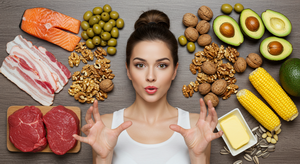 rature and scientific research that highlights the dangers of each of the various fats. They cause cancer, heart disease, autoimmune disease, obesity, and so on. At the same time, there are just as many studies showing the health benefits of each of the various fats. What are we to do? The answer lies in our own unique physiology. Each person reacts differently to each of these different food fats. You have to look at what is going on in your body as a reflection of what you are eating and see how you are personally responding to your diet. If you have health issues, what are they? Are they issues that might respond better to switching from one fat source to another? Or maybe the issue is simply too much or too little fat in your diet. If you have metabolic syndrome and insulin resistance, you probably need to cut down your fat consumption. If you have hormonal issues and early skin aging, you might need more fats of the kind specific to your needs. rature and scientific research that highlights the dangers of each of the various fats. They cause cancer, heart disease, autoimmune disease, obesity, and so on. At the same time, there are just as many studies showing the health benefits of each of the various fats. What are we to do? The answer lies in our own unique physiology. Each person reacts differently to each of these different food fats. You have to look at what is going on in your body as a reflection of what you are eating and see how you are personally responding to your diet. If you have health issues, what are they? Are they issues that might respond better to switching from one fat source to another? Or maybe the issue is simply too much or too little fat in your diet. If you have metabolic syndrome and insulin resistance, you probably need to cut down your fat consumption. If you have hormonal issues and early skin aging, you might need more fats of the kind specific to your needs.
One consideration about how we metabolize fats that is helpful to understand – fats don’t metabolize in the presence of insulin. That means that if you have elevated insulin levels, such as what happens any time you eat carbs or sugars, your body will simply store any fat that you have eaten instead of burning it. Cells can only burn either sugar or fat but not both at the same time. And cells always burn the sugar (carbs) first. So just a simple meal planning tip, don’t eat fatty foods with carbs if you are carrying a few extra pounds. That means skipping the bun with your burger, the potatoes with your pot roast, soda with almost any meal, and such foods as chips, ice cream, and doughnuts altogether. These are just mechanisms for weight gain. is helpful to understand – fats don’t metabolize in the presence of insulin. That means that if you have elevated insulin levels, such as what happens any time you eat carbs or sugars, your body will simply store any fat that you have eaten instead of burning it. Cells can only burn either sugar or fat but not both at the same time. And cells always burn the sugar (carbs) first. So just a simple meal planning tip, don’t eat fatty foods with carbs if you are carrying a few extra pounds. That means skipping the bun with your burger, the potatoes with your pot roast, soda with almost any meal, and such foods as chips, ice cream, and doughnuts altogether. These are just mechanisms for weight gain.
One thing that is fairly clear is that in a standard mix ed food diet, we don’t need as much fat as we are eating. Our essential fatty acid needs can be met with a couple hundred calories of fat each day (a couple of tablespoons). Yet the average person is consuming around 900 calories a day – probably too much. However, if you are consuming a diet that is very low in carbohydrates, your body will be in a state of burning fats for energy all the time. This is just fine, and in fact, actually reduces inflammation throughout the body and brain. ed food diet, we don’t need as much fat as we are eating. Our essential fatty acid needs can be met with a couple hundred calories of fat each day (a couple of tablespoons). Yet the average person is consuming around 900 calories a day – probably too much. However, if you are consuming a diet that is very low in carbohydrates, your body will be in a state of burning fats for energy all the time. This is just fine, and in fact, actually reduces inflammation throughout the body and brain.
The real answer to the “what to eat” question comes d own to what works for you? What do you digest well? What makes you feel energized? How well does your body heal and resist disease? Do you have any disease processes going on right now? If so, what foods exacerbate those conditions? Is your weight ideal and stable? Really, the answer is all about you! own to what works for you? What do you digest well? What makes you feel energized? How well does your body heal and resist disease? Do you have any disease processes going on right now? If so, what foods exacerbate those conditions? Is your weight ideal and stable? Really, the answer is all about you!
Take care,
David
The fourth of July meant our yearly neighborhood po tluck out in the cul-de-sac. This was the best year ever because it was cool! Last year it was 109 degrees. We had about a dozen neighbors and all these kids that used to be like 4 or 5 are now in their late teens! We hung out for about an hour and a half, then headed back home before they set off their fireworks. tluck out in the cul-de-sac. This was the best year ever because it was cool! Last year it was 109 degrees. We had about a dozen neighbors and all these kids that used to be like 4 or 5 are now in their late teens! We hung out for about an hour and a half, then headed back home before they set off their fireworks.
|
 tching a video of a dog for 5 minutes significantly reduced stress in the folks watching the videos. The idea here is this is an easily accessible option for folks that don’t want to talk to a therapist.
tching a video of a dog for 5 minutes significantly reduced stress in the folks watching the videos. The idea here is this is an easily accessible option for folks that don’t want to talk to a therapist.













